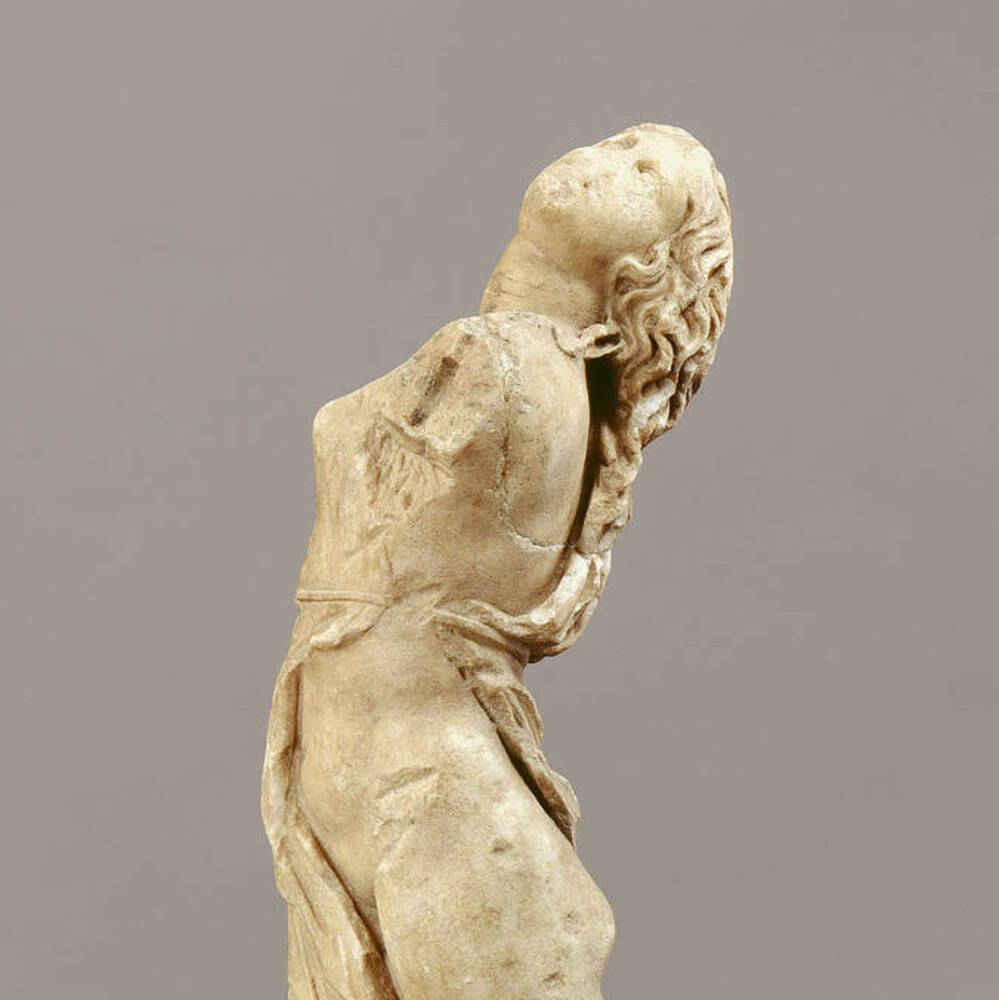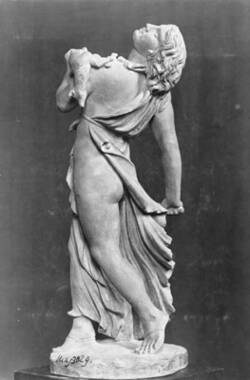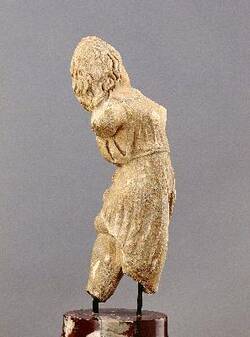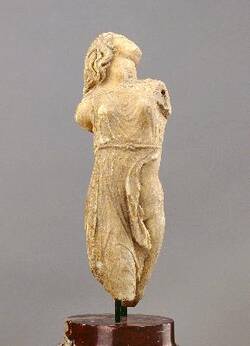Just a year after its purchase, Georg Treu, the then director of the Skulpturensammlung, interpreted this statuette as a reduced reproduction of a work to which a poem is dedicated in the Anthologia Graeca (Book 9, No. 774):
“The Bacchante is of Parian marble, but the sculptor gave life to the stone, and she springs up as if in Bacchic fury. Scopas, your god-creating art has produced a great marvel, a Thyad (Bacchante), the frenzied slayer of goats.”
Further Media






On your device, you can see a reconstructed version of the maenad.
She is carrying a kid goat thrown over her shoulder. In her right hand, she is holding a knife. This version was made in around 1900, commissioned by Georg Treu, then Director of the Sculpture Collection in the Albertinum. Take a moment to look at the surface of the break on what remains of the statuette’s left arm. For Georg Treu, this break pointed to the figure bearing something on her shoulder – perhaps indeed a young goat. That is, of course, just an educated guess. The original statue, probably lifesize or even larger and sculpted by Scopas of Paros, has never been found. Classical writers, though, have left many accounts of it, including one from late antiquity by the orator Callistrator, which would fit Treu’s reconstruction. A writer from late antiquity, who calls the maenad a ‘bacchant’, has wonderfully summarised Callustrator’s long description:
“The bacchant may be Parian marble, but the sculptor has breathed life into the stone. She leaps like one intoxicated by Dionysus. O Scopas, your art that fashions gods has wrought a miracle, a goat-slaying maenad in her frenzy.”
The maenads are first mentioned in works by the Greek epic poet Homer. Above all, though, Greek dramatist Euripides coined the image of maenads falling into an ecstatic frenzy in their worship of Dionysus. Euripides also refers to them as ‘bacchants’. Listen to an extract from his play The Bacchae:
“pan de sunebakcheu' oros
kai thêres, ouden d' ên akinêton dromô.
hêmeis men oun pheugontes exêluxamen
bakchôn sparagmon, hai de nemomenais chloên
moschois epêlthon cheiros asidêrou meta.”
“The whole mountain and its wild creatures
were possessed by the god, and their motion made all things move.
Now, we took to our heels and escaped being torn apart by the bacchants,
but they, with weaponless hands, attacked the cattle grazing on the grass!
One of them you might have seen using her hands
to wrench asunder a young heifer with swollen udders
– how the creature bellowed!
Others were rending and tearing apart full-grown cows.
You might have seen ribs or cloven hooves flung everywhere,
and bloodstained pieces hung dripping from the pine-branches.
Bulls that had been proud creatures before,
with anger rising in their horns, were wrestled to the ground,
dragged down by the countless hands of young women.
They were stripped of the flesh they wore faster
than you could have closed those royal eyes of yours.”
- Location & Dating
- 1st century CE
- Material & Technique
- Parian marble
- Dimenions
- H. 45,5 cm, B. 14,0 cm, T. 14,0 cm
- Museum
- Skulpturensammlung
- Inventory number
- Hm 133